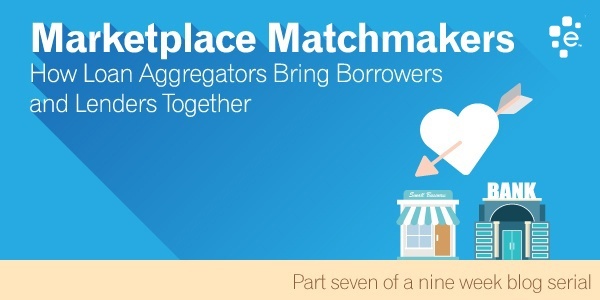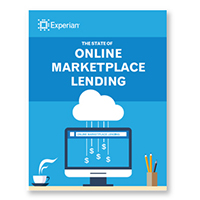
Marketplace lending has become a dynamic source of small-business financing. In 2013, marketplace lenders funded customers to the tune of about $3 billion, twice the volume from the previous year. These numbers are expected to continue to rise steeply throughout the rest of the decade as customers become increasingly comfortable with the concept.
Operating almost exclusively via the Internet, thesefintech companies can be particularly helpful to newer, less-established retailers, such as restaurants and B2B service companies that don’t have the documented track record that most traditional banks prefer. These alternate financing sources also can be an excellent resource for smaller loans in the $5,000 to $200,000 range. Larger banks often are reluctant to consider smaller business loans.
Business owners looking for quick access to capital have a wide variety of sources to choose from:
- Nonprofit lenders
- Invoice financing
- Online business loans
- Loan aggregators
- Peer-to-peer financing
- Crowdfunding
But how can potential borrowers locate these new lenders? When it comes to matching small-business borrowers to the most appropriate lenders, a new breed of marketplace matchmaker or loan aggregator is finding success bringing the two parties together. Aggregators compare the needs and qualifications of borrowers with lenders in their network matching their target criteria. Think of it as speed dating for business financing.
Organic Online Searches
Not surprisingly, many online lenders rely on technology to find potential customers. Common online marketing tactics include pay per click and search engine optimization (SEO).
“Most of our customers come from the Internet itself,” confirmed Meredith Wood, Editor in Chief of Fundera, an aggregator for about 30 individual marketplace lenders. Founded in early 2014, Fundera has helped more than 1,200 small businesses acquire loans totaling more than $60 million this year. “We do paid acquisition and also use content to generate organic searches. We rank well for competitive terms like ‘business loans.’”
Nav (formerly Creditera), founded in 2012, is another successful fintech company, offering an array of commercial financial services, including credit cards, credit card processing and small-business loans. Like Fundera, Nav relies on SEO for many of its leads.
“Of all the lead channels we have, SEO organic is the most difficult to get going,” said Levi King, Founder and CEO of Nav. “You’re competing for attention with millions of other people. But while it’s the slowest channel, it also tends to yield leads of super high quality. The people who find us organically are looking for what we offer.”
Social Media
Social media is one tool being used more frequently in Web-based marketing. Using advanced algorithms, marketplace lenders can target ads directly at businesses that fit a specific profile.
“We use Facebook, Twitter, LinkedIn — anywhere small businesses are showing up and you can target them effectively,” King explained. “Small-business owners behave a lot like consumers. Their business and personal communications are almost identical. While social media is a great way to connect with this market, it’s definitely not the way you’d market to enterprises.”
Referrals
Referrals are another significant and valuable source of customer leads and tend to come from one of two principal sources:
- Other funding sources — Often, a lender, such as a bank, that is unable or unwilling to write a loan for a small business will refer that business to an alternative lender with more flexible requirements. Banks generally refer customers only to companies they have worked with before and have established credibility in terms of reputation, integrity and professionalism. Lenders that make referrals under these circumstances usually do so as a courtesy and receive no fee or other consideration for their efforts. Their intent is to cultivate good relationships with customers who may someday migrate to more traditional banking services.
- Satisfied customers — Perhaps the most valuable referrals are those that come from other business owners who already have received loans from a particular marketplace lender. Getting referrals from friends, relatives and business acquaintances sets a customer’s mind at ease and helps the customer overcome the hesitation and anxiety sometimes associated with dealing with a new company.
Partnerships and Aggregators
Many marketplace lenders have developed formal partnerships with companies or with other lenders that provide them with customer referrals. Unlike the casual referrals discussed above, these often involve fees or other consideration as part of a contracted business arrangement.
For example, Fundera works with FTD® to help their florists find financing.
“Borrowers complete one aggregated application that we send off to various lenders,” said Wood. “We present the offers we receive to the borrowers and work through them together so they understand what each offer means, what they really cost, etc.”
The Future of Online Lending
Not surprisingly, both Wood and King are bullish on the future of marketplace lending. Wood in particular sees the option as being very attractive to young people who have some experience in the business world and now are ready to start companies of their own.
The online marketplace lending industry is growing by leaps and bounds. Fintech companies continue to rapidly innovate, developing niche products and efficient data-driven marketing approaches. At the same time, the banking sector remains the dominant source of funding for small businesses, with close community ties and deep customer relationships. Fintechs and banks are beginning to explore ways to work together to make the most of what each brings to the small-business funding market. Regulators are engaging with the online marketplace lending industry and considering factors related to disclosure, transparency and lending practices. The outcome for small businesses is increased choice, information and access. That is good news for them and for the economy.
The State of Marketplace Lending

In 2008, a short two years after the first online marketplace lenders opened for business, the Great Recession began to wreak havoc on worldwide financial markets. Small businesses struggled to survive, banks failed and access to capital was limited. More online lenders saw an opportunity and opend for business. These technology-driven newcomers hired an army of data scientists, coders and digital marketers. In the fall of 2015 the innovation, industry disruption and regulatory uncertainty that characterize this dynamic sector led Experian to produce a series of articles focusing on different aspects of online marketplace lending. This report contains those articles.
Related articles
Just how alternative are today’s online marketplace lenders?
How online marketplace lenders are changing the rules of small-business finance
Self-Regulatory Program for Nonbank Small Business Lenders
Top regulatory priorities for commercial lenders
Playing to Your Strength – Opportunities for Regional Banks to Build Better Lending Portfolios
Game Changer – How Marketplace Platforms Are Bringing Financial Institutions Back to Small-Business Lending
Marketplace Matchmakers – How Loan Aggregators Bring Borrowers and Lenders Together
New Frontiers – What’s Next For Marketplace Lending?
